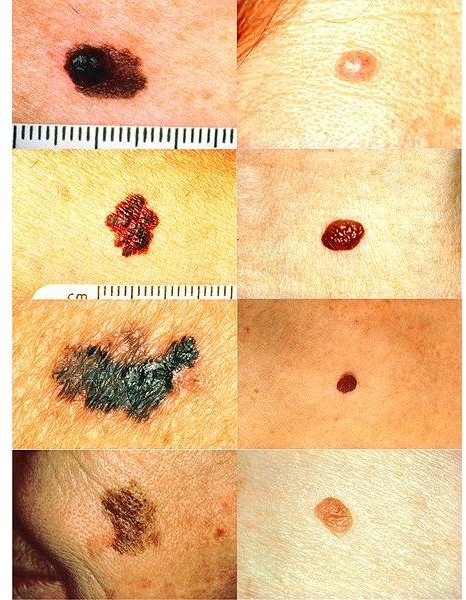Identify Melanoma Moles and Skin Cancer
What is Melanoma?
Melanoma is a type of skin cancer that occurs in the top layer of the skin which is called the epidermis. The cancer develops in the melanocyte cells which are the cells that contain melanin and control the color of the skin. Like all other skin cancers, melanoma most frequently occurs in the areas of the body that receive the most exposure to sunlight and ultra violet rays. According to Melanoma.com, melanoma lesions most often occur on men in the head, neck and upper torso. For women, the most common locations for melanoma are on the lower legs.
What Does Melanoma Look Like?
Because the initial diagnosis of melanoma is often discovered by the patient, it is important for everyone to know what to look for. To understand what melanoma looks like you must consider five different factors. The easiest way to remember what melanoma looks like is to remember the acronym ABCDE. The letters represent each of the symptoms described below and stand for asymmetry, borders, color, diameter and evolution.
Asymmetry and Borders
One of the most recognizable signs of melanoma is a mole that has either asymmetrical or irregular borders. A mole with asymmetrical borders will have one side with a smooth arc border and another side with a jagged or asymmetrical border. The two sides of the mole will look very different. Likewise, if you have a mole that has irregular borders all the way around it, instead of being in a perfect circle, it is a sign that the mole may be melanoma.
Coloration of the Mole
The color of the mole can also distinguish between ordinary skin marks and cancerous melanoma. Most regular moles are an even shade of tan or brown throughout. If you have a mole that is darker on one side or that consists of two colors, such as tan and black, it may be melanoma.
Other mole colors that are cause for concern are red, blue and moles that are dark with white or light spots inside of them. It is important to carefully watch any existing moles on the body and be aware of changes in color so that they can be examined by a physician.
Mole Size is Also a Factor
The diameter or width of the mole is also an important aspect to consider. Melanoma will appear slightly larger than a regular mole and is typically wider than ¼ of an inch across. A good rule of thumb is that if the mole is the size of a pencil eraser or smaller and does not grow any bigger, then it is probably not cancerous. All moles that are larger than a pencil eraser should be examined by a physician for proper diagnosis.
Images
References:
Melanoma.com: What Is Melanoma?
https://www.melanoma.com/whatis.html
SkinCancer.org: Warning Signs: The ABCDEs of Melanoma
https://www.skincancer.org/the-abcdes-of-melanoma.html
Image Credits:
WikiMedia Commons: Melanoma_vs_normal_mole_ABCD_rule_NCI_Visuals_Online.jpg
